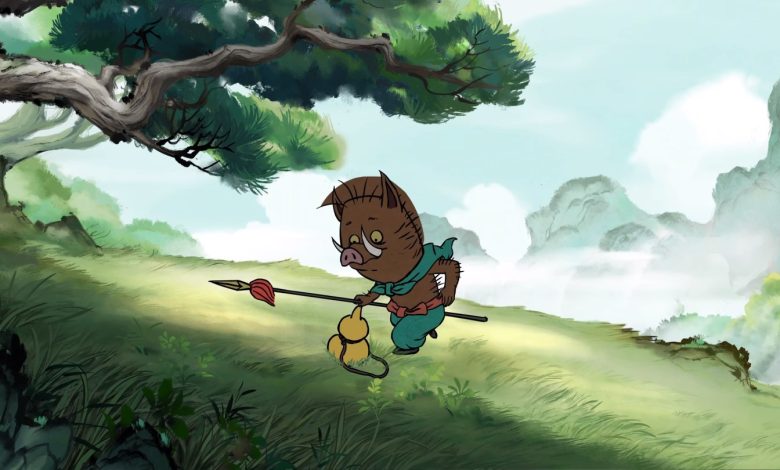Beijing Fest Celebrates Animated Hit Film ‘Ne Zha 2’ as Chinese Industry Analyzes Secrets of Its Success

With China still under the spell of Enlight Pictures’ box-office hit Ne Zha 2, the 15th edition of the Beijing International Film Festival, which kicks off Friday and runs through April 26, is wisely playing to the people in scheduling a number of events celebrating the wild success of what’s now the world’s highest-grossing animated hit of all time.
Fans are being treated to more screenings of the film and, as previously unveiled, an exhibition of 150 posters for the movie hand-painted by director Yang Yu, aka Jiaozi.
اRelated Posts:
But the festival is also hoping to make use of all the attention that has followed Ne Zha 2’s more than $2 billion take by turning attention to issues affecting the Chinese animation industry as a whole, one that’s now worth around $30 billion annually, according to state-run media.
The festival’s Core Forum event is hosting seminars April 19-25 focused on the film and using its success to open up discussions on “IP development, audience cultivation, and industrial upgrading to tap new growth drivers for the industry.”
The big question on everyone’s lips is and will be what exactly has made this tale of a reincarnated demon who battles gods and demons so incredibly popular. Plus, will that success spur investment and creativity across China’s animation industry as a whole?
Producer Cui Wei believes that industry players in China are keeping their feet firmly on the ground despite all the fanfare and noise that has followed the success of Ne Zha 2.
“Compared to other genres like live-action films, animation has a much longer creative and production cycle,” says Cui. “This means that while a high-profile release may generate short-term buzz and influence immediate decision-making, its impact tends to fade over time. In the long run, the growth and value of the animation industry still rely heavily on patience, consistency, and long-term investment. Most professionals in the field are aware of this and remain grounded, rather than being overly influenced by isolated success stories.”
Cui is currently collaborating with Shanghai Animation Film Studio on the animated feature Nobody, serving as producer on the project on behalf of Chen Liaoyu Studio. Nobody is derived from the popular Yao – Chinese Folktales series of shorts that first screened exclusively in China on the online video platform Bilibili, while they are now also available internationally on YouTube. Inspired by traditional Chinese myths and legends, they have been viewed more than 160 million times.
“The rise of digital platforms has played a key role” in the rise of animation in China, says Cui. “Online streaming and social media have cultivated a large audience of adult viewers who appreciate animation—not just children. This group tends to be highly engaged, vocal, and has strong spending power, which in turn has encouraged more content creation and investment. At the same time, commercial development around animation—such as merchandising and IP expansion—has become more sophisticated, forming a more complete and self-sustaining market ecosystem.”
Chinese media have picked up on how that “ecosystem” played its part behind the scenes during the production of Ne Zha 2, pointing to the fact that 90 percent of the 138 companies involved in the production were Chinese, and that 80 percent of those were small, or “micro,” companies.
“In China, animated film production typically follows a collaborative approach,” explains Li Zhen, senior director of Baidu’s streaming service iQIYI and head of bbBig, the in-house production team for iQIYI’s children’s content. “So when a film company decides to produce an animated feature, they typically hire a pre-production team responsible for directing, art design, and storyboarding, then outsource mass production to various companies. At animation festivals and content markets across China, we can observe a diverse range of studios presenting their work, from established players to emerging teams with innovative approaches. This diversity in the animation ecosystem creates opportunities and vitality across the industry.”
Li believes that Ne Zha 2 tapped into a universal fascination with characters drawn from mythology – from Superman (Greek) and Thor (Norse) to China’s current fascination with a little demon boy.
“From our creative perspective, what’s most interesting is how these successful productions demonstrate that classic characters can be reimagined with fresh perspectives,” he explains. “The key appears to be finding the right balance between honoring traditional elements while bringing innovative storytelling techniques and contemporary production quality to the project.”
He concluded: “In social media conversations and industry gatherings, we observe increasing discussions about creative approaches rather than just thematic choices. These conversations suggest that what ultimately matters is not so much which character is featured, but the unique perspective, storytelling craft, and production quality brought to the project.”
Source: Hollywoodreporter
HiCelebNews online magazine publishes interesting content every day in the movies section of the entertainment category. Follow us to read the latest news.
Related Posts
- Gabourey Sidibe’s Twins Hit Major Milestone One Week After Celebrating Their First Birthday: ‘So Much Joy’
- Royal couple set to divorce following two-year marriage – report
- Cannes: Alice Rohrwacher to Lead Golden Camera Jury
- Prince Louis’ 7th Birthday Portrait Marks a First for the Young Royal: Spot the Subtle Wardrobe Switch
- Katie Holmes’ famous ex-boyfriend makes surprising comment on status of their relationship





